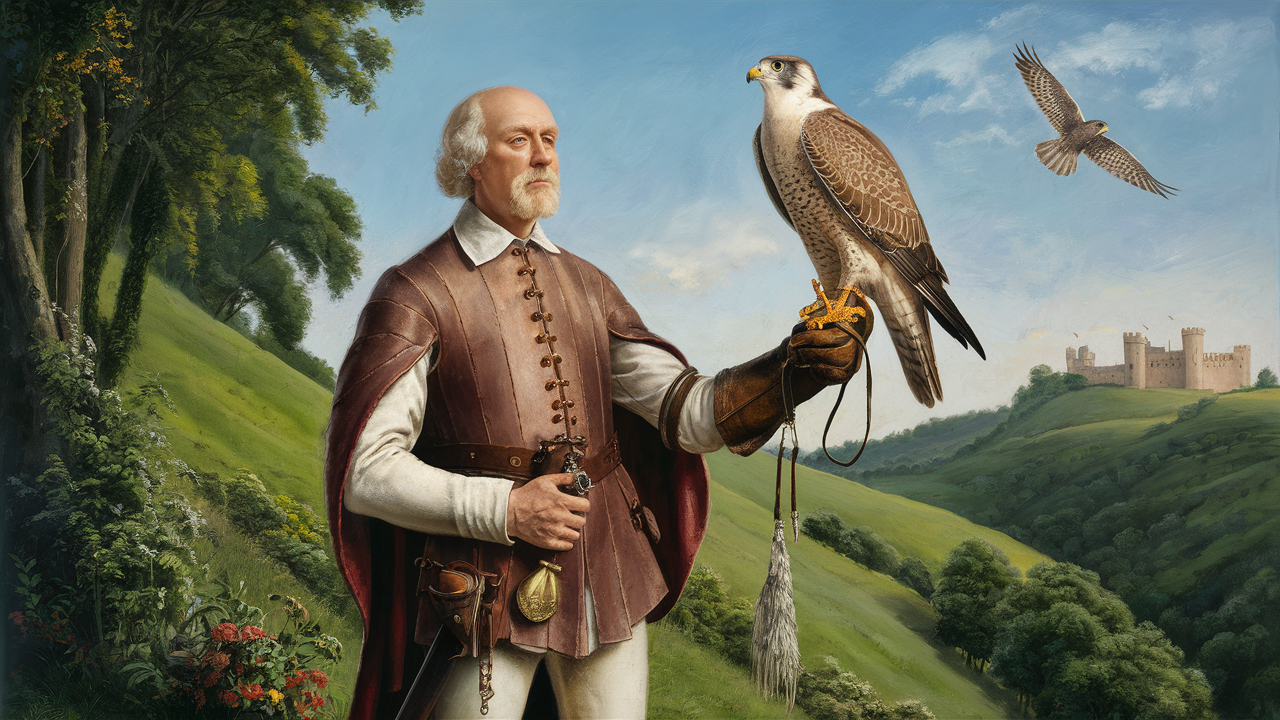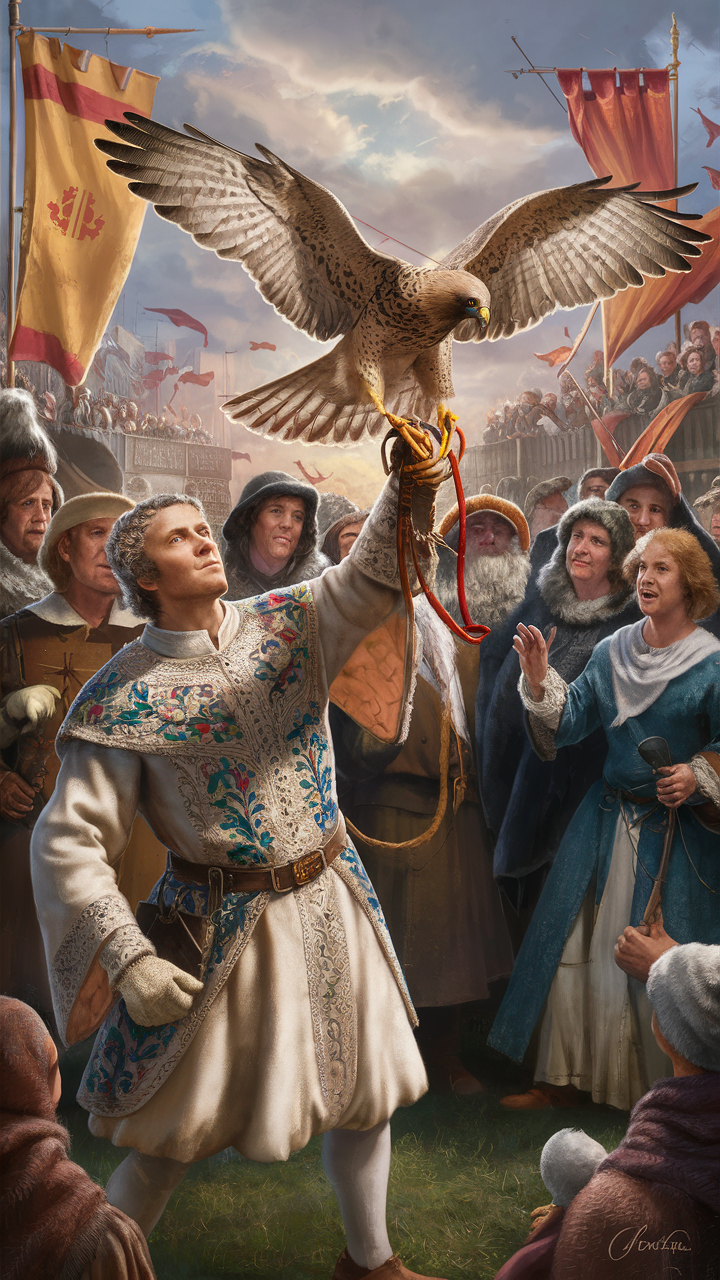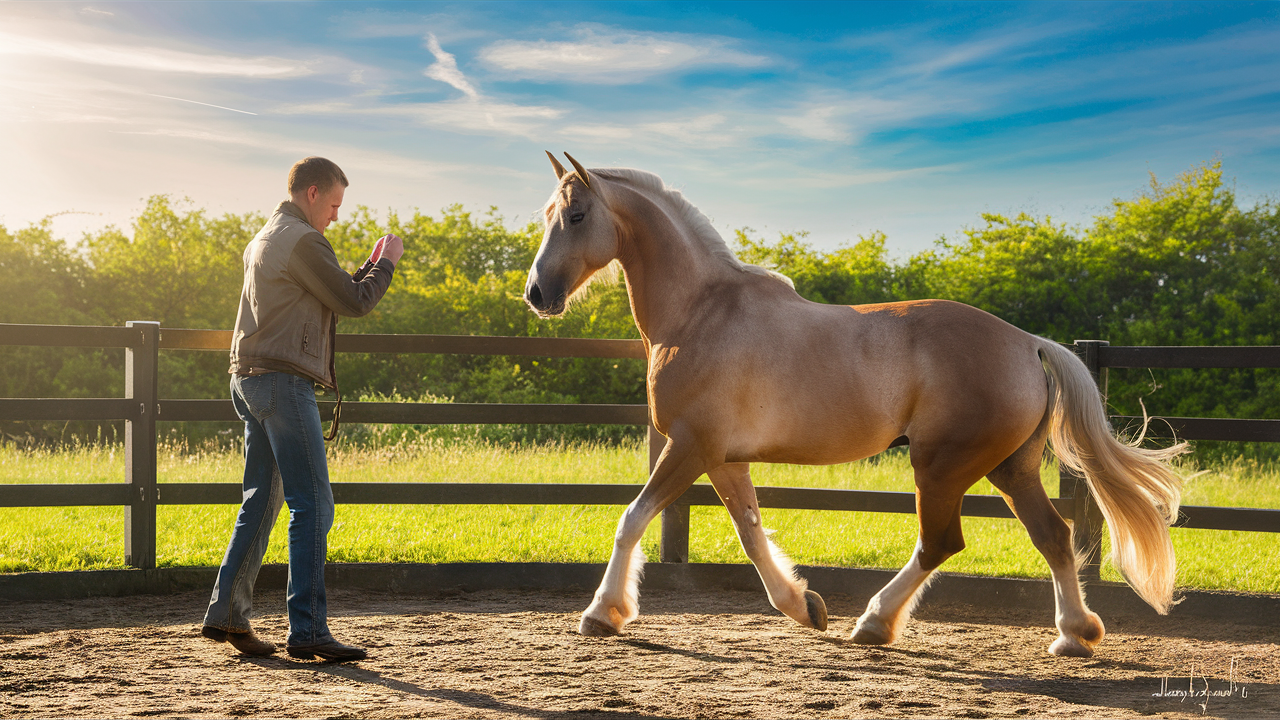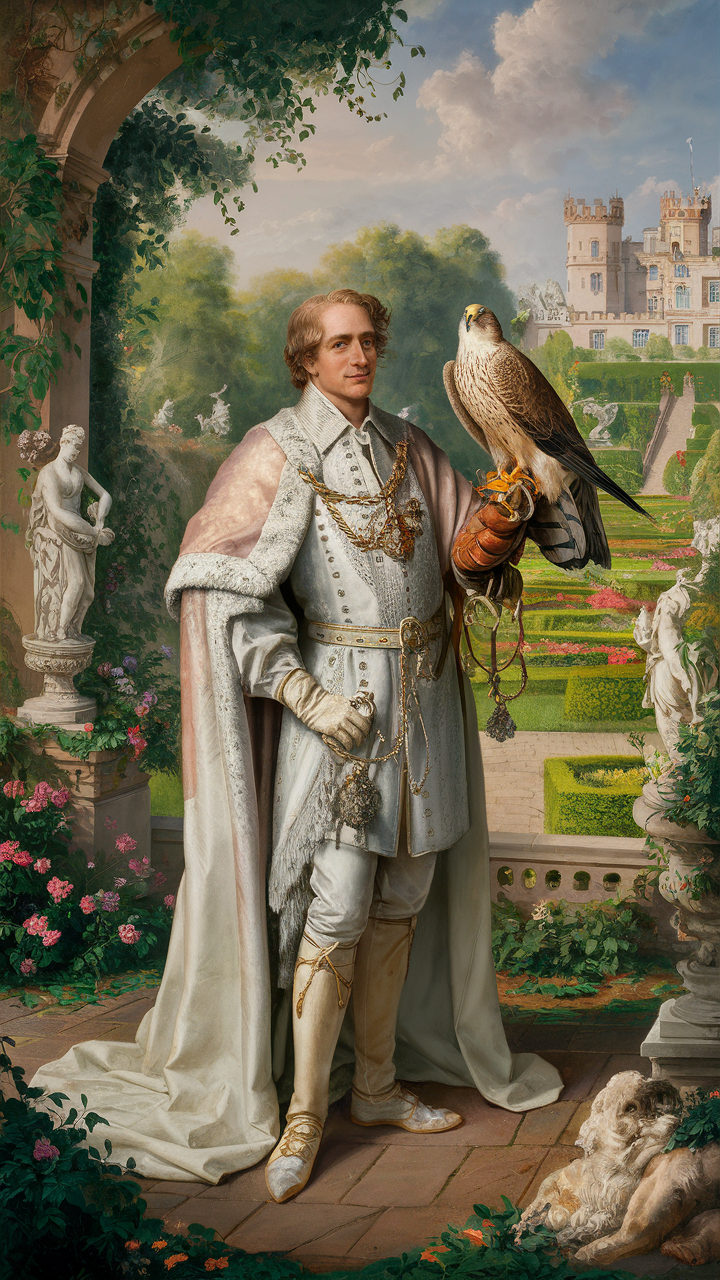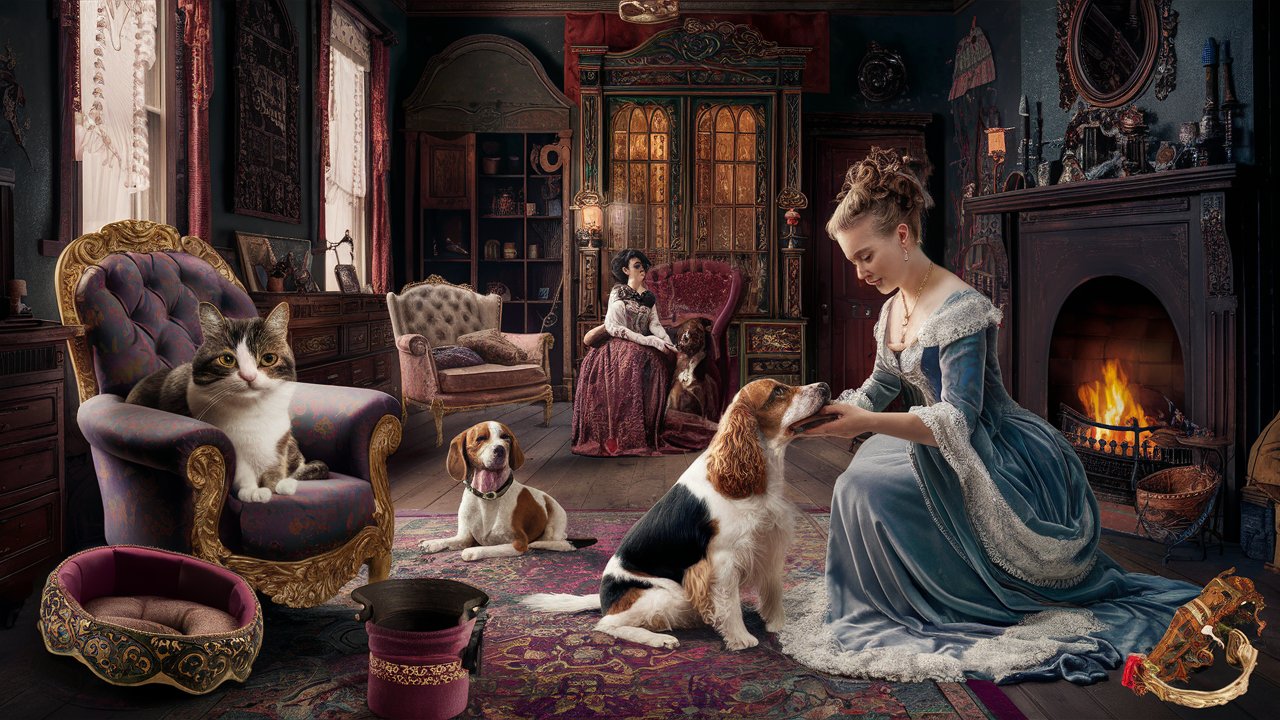Introduction
The medieval falconry history unveils a tapestry of tradition deeply woven into the social and cultural fabric of medieval times. Falconry, more than just a method for hunting game birds or quarry, emerged as a sophisticated symbol of status and skill among the nobility. From the century onwards, owning and adeptly training birds of prey like gyrfalcons, peregrine falcons, and sparrowhawks was akin to holding a badge of honor. This intricate practice was not only a pastime but a pivotal part of societal hierarchy, influencing various facets of medieval life.
In exploring the history of falconry, one finds that it stretched beyond mere hunting. The sport was intricately linked to the conservation of birds of prey and played a crucial role in falconry and conservation efforts, a tradition upheld by entities like the International Association for Falconry and the Association for Falconry and Conservation. Falcons were revered, not merely for their utility in hunting but as emblems of a cherished heritage, prompting fondness for the sport that extended through regions from Central Asia to the very cradle of European falconry. These trained raptors were not only hunters but also cultural icons, manifesting the noble values of their trainers and the eras they epitomized.
Key Takeaways
- Medieval falconry was integral to the social hierarchy and cultural fabric, serving as a sophisticated symbol of nobility and skill.
- Falconry extended beyond hunting, contributing significantly to the conservation of birds of prey and shaping conservation practices.
- The training and care of falcons required specialized skills, reflecting the high status and dedication of falconers in medieval society.
- As a symbol of nobility, falconry demonstrated wealth and power, with falcons themselves being prized possessions and status symbols.
- The decline of falconry in the Middle Ages was influenced by the advent of firearms and changing social attitudes towards animal welfare.
- Despite historical declines, falconry has seen a modern revival, recognized globally as a cultural heritage and practiced as a traditional sport.
The Role of Falconry in Medieval Society History
Falconry, more than just a medieval sport, was a significant part of noble life, demonstrating power and offering entertainment. This tradition, deeply rooted in practiced falconry and the use in falconry of birds such as gyrfalcons and goshawks, showcased wealth and a connection with nature. Nobles were fond of the sport, employing hunting with falcons to assert their place in the social hierarchy and highlight their falconry reached prominence. Beyond merely hunting, falconry involved skill and control, essential elements in the aristocratic circles, where it became a symbol of status and prowess.
Falconry as a Display of Wealth and Power
The practice of falconry served as a powerful indicator of status and wealth within medieval society. Owning and maintaining hawks and falcons was an expensive endeavor that symbolized not only the noble’s high status but also their prowess in managing and training these magnificent birds. Elaborate hunting parties and falconry displays were social events where nobles could flaunt their affluence and connections, reinforcing their position in the social structure.
Falconry’s Role in Social and Cultural Events
Falconry was central to many social and cultural events, transcending its primary function as a form of hunting. It was a spectacle of skill and an art that required years of dedicated training, both for the falconer and the bird. Major tournaments and hunting gatherings were often held, where falconry took center stage, drawing participants and spectators from various regions, fostering a sense of community and shared interests among the elite.
Falconry as a Practical Hunting Skill
Beyond its social implications, falconry was a practical method of obtaining food, especially in regions where herons and other small game were plentiful. This aspect of falconry ensured that it was not only a pastime for the nobles but also a necessary skill that contributed to the sustainability of a noble house. The ability to train and work effectively with birds of prey was a prized skill, deeply respected and often essential for the survival and prosperity of noble families.
Training and Care of Falcons in the Middle Ages
The training and care of falcons during the medieval period were complex arts, reflecting a deep knowledge of avian behavior and a commitment to the conservation of these majestic birds. As falconry became a sophisticated art, falconers had to be patient and skilled, nurturing the natural instincts of birds used in falconry while adjusting them to the handler’s guidance. This balance of care and training ensured the birds’ effectiveness in hunting and their well-being, which were crucial in falconry for future generations and represented many aspects of falconry met during that era.
Key Aspects of Falcon Training and Care in the Middle Ages:
-
Initial Capture and Training Techniques: Young falcons were often captured from the wild and subjected to careful and systematic training methods like hooding and tethering to acclimatize them to human interaction and prepare them for hunting.
-
Diet and Physical Health Maintenance: Falcons were fed a high-quality diet consisting mainly of fresh meat, such as pigeons or quail, essential for maintaining their physical strength and ensuring their effectiveness during hunts.
-
Housing and Protection: Falcons were housed in specially designed mews that protected them from harsh weather conditions and potential predators, essential for preserving their health and safety.
-
Regular Health Monitoring: Falconers routinely checked their falcons for signs of illness or distress to ensure they were in optimal condition for training and hunting, reflecting a deep commitment to the birds’ well-being.
-
Cultural and Social Role of Falconry: Beyond practical hunting, falconry was woven into the social fabric of the Middle Ages, with falcons symbolizing status and power at various social and cultural gatherings, reinforcing the nobility’s prestige and influence.
This list not only organizes the crucial elements of falcon care and training but also enhances the understanding of falconry’s rich historical and cultural significance during the medieval period.
Techniques of Training Falcons
Training a falcon required an understanding of its instincts and behaviors, typically beginning with the bird’s capture at a young age. Falconers utilized techniques such as hooding to calm the birds and tethering to acclimate them to human presence, a practice that ensured the falcons could perform at high speeds and maneuver through obstacles efficiently. These methods, which developed over time, underscore the technical aspects of falconry that must have taken significant patience and understanding of bird psychology.
Health and Maintenance of Falcons
The health and maintenance of falcons were paramount, with falconers dedicating substantial resources to create optimal living conditions. Falcons were kept in mews, a type of housing designed to protect them from harsh weather and keep them healthy. They were fed a diet of high-quality fresh meat, such as pigeons or quail, which was crucial for maintaining their physical strength and hunting prowess. Regular health checks were essential to ensure the birds were free from illness and ready for the rigors of hunting.
Falconry as a Symbol of Nobility and Prestige
Falconry in the Middle Ages was more than a sport; it was an emblem of nobility and a sign of prestige, deeply intertwined with falconry and conservation of birds. Nobles showcased their social standing, wealth, and power through falconry, emphasizing their dedication to the falconry from all regions. Particularly, the ownership of esteemed species like the gyrfalcon was not just a luxury but a reflection of a noble’s ability to engage in costly pursuits and a commitment to the sport of falconry and falconry of the common people.
The Cultural Significance of Falconry
Falconry was deeply intertwined with the cultural identity of the nobility. It was practiced across various regions, from falconry in Britain to falconry in India, each adding local nuances to the practice. This widespread adoption made falconry a global symbol of status and class, celebrated through tournaments and public displays that emphasized the handler’s skill and the bird’s training and beauty.
Falconry in Diplomacy and Social Relations
Falconry also played a crucial role in diplomacy and the reinforcement of social ties among the aristocracy. Gifted falcons were highly prized and often exchanged between noble families as signs of goodwill or political alliance. These practices not only reinforced the status of falconry as a pursuit fitting for the elite but also helped spread the sport’s influence across borders, making it a cornerstone of noble life in the Middle Ages.
The Decline of Falconry in the Middle Ages
Falconry, once a celebrated practice among the nobility, began to see a decline in the later Middle Ages due to several transformative changes. The advent of firearms altered the landscape of hunting, making the use of falcons less necessary and less efficient. As new technologies and methods for hunting emerged, such as those documented in falconry books, falconry started losing its appeal as the premier means of showcasing aristocratic hunting prowess. The sport, once central to falconry in the region and integral to English society, was no longer the exclusive domain of the elite, as hunting with birds became more about utility than status.
Impact of Technological and Social Changes
The rise of firearms significantly diminished the practicality of falconry. Hunting with guns became more effective for both sport and sustenance, leading to a gradual shift away from training and relying on birds of prey. This transition was not just technological but also social, as the symbols of status once associated with falconry began to change, aligning more with the advancements of the time rather than traditional practices.
Changing Attitudes Towards Animal Welfare
As European societies became more urbanized and empathetic towards animal welfare, the ethics of falconry came under scrutiny. The capture and training of wild birds, once seen as a noble skill, began to be viewed as cruel and unnecessary. These shifting perceptions, coupled with the growing legislative restrictions on the capture and trade of falcons, contributed to the sport’s decline, reflecting a broader transformation in societal values and norms.
The Revival of Falconry in the Modern Era
Falconry has undergone a significant resurgence in the modern era, reestablishing itself as a cherished sport and cultural practice. The 19th century sparked a revival in interest towards traditional hunting methods, including falconry, which was further boosted by conservation efforts aimed at protecting birds of prey and their environments. Today, this ancient tradition enjoys a global following, blending historical practices with modern advancements in wildlife conservation and falconry technology.
Integration of Conservation and Cultural Heritage
In recent decades, falconry has not only been a sport but also a part of broader wildlife conservation efforts. Recognized by UNESCO as an intangible cultural heritage, falconry has played a crucial role in raising awareness about the plight of birds of prey and the ecosystems they inhabit. This recognition has spurred a wave of conservation initiatives, ensuring that falconry contributes positively to the preservation of bird species and their natural habitats.
Technological Advancements in Falconry
The incorporation of modern technology into falconry practices has transformed how falconers train and care for their birds. GPS tracking, advanced veterinary care, and specialized falconry equipment have all enhanced the safety and effectiveness of falconry as a sport. These advancements allow falconers to maintain a high standard of care for their birds, ensuring their health and well-being while optimizing their natural hunting abilities.
“Falconry, an ancient art, once pivotal in the medieval tapestry of life, finds its renaissance in modern conservation efforts, bridging centuries with a bond to nature that is both old and perpetually new.” — Helen Macdonald
The Legacy of Falconry in Medieval Culture
Falconry’s influence on medieval culture extends beyond just a sport; it has woven itself into the fabric of art, literature, and daily speech, leaving a legacy that transcends time. From the majestic depictions of falcons in medieval tapestries to the enduring phrases in modern language, falconry has contributed significantly to cultural heritage. This tradition not only enriched the artistic landscape but also offered insights into the social and moral fabric of the time, reflecting the profound bond between humans and birds of prey.
Falconry in Art and Literature
Falconry has been immortalized in various forms of art and literature, serving as a symbol of nobility and the intricate relationship between man and nature. Medieval manuscripts and tapestries frequently depicted falcons and their handlers, symbolizing status, power, and the primal connection to the natural world. These artistic representations have helped historians and scholars trace the evolution of falconry, understanding its significance in noble life and its influence on medieval aesthetics.
Educational and Cultural Continuation
The legacy of falconry is actively preserved through reenactments, festivals, and educational programs that aim to keep this ancient art alive for future generations. These events serve not only as entertainment but also as educational platforms, offering insights into medieval societal structures, wildlife conservation, and the ethical dimensions of human-animal relationships. By celebrating falconry, we continue to honor our cultural heritage and the timeless lessons it teaches about respect, stewardship, and the complexity of the natural world.
[lasso rel=”amazon-31″ id=”5449″]
Conclusion
The legacy of medieval falconry history is not just a relic of the past but a vibrant chapter that continues to resonate in modern culture and conservation efforts. The sport’s influence on art, language, and social customs highlights its significant role in shaping medieval Europe. Through historical reenactments and educational programs, the essence of falconry is preserved, offering insights into the values and practices that characterized noble pursuits and the conservation of birds of prey.
As falconry is celebrated and studied today, its impact is recognized not just in historical contexts but also in how it enriches modern falconry practices. Organizations like the International Association for Falconry help maintain falconry’s cultural heritage, ensuring that this ancient art continues to foster interest in the sport and awareness of wildlife conservation. The timeless allure of falconry, from its technical aspects to its role in social hierarchy, underscores its enduring appeal and significance.

